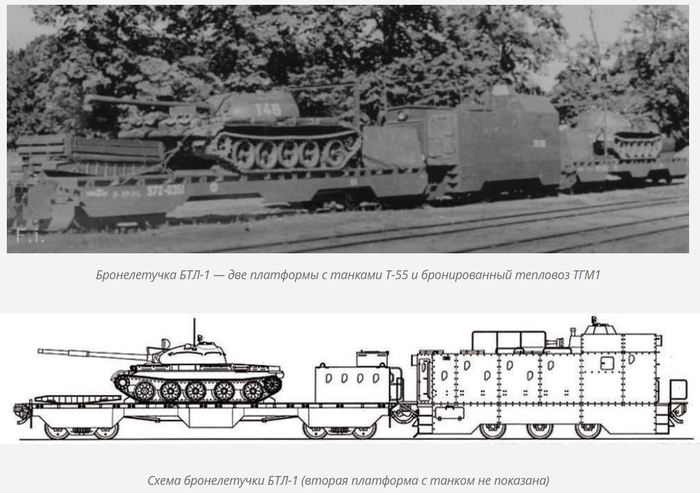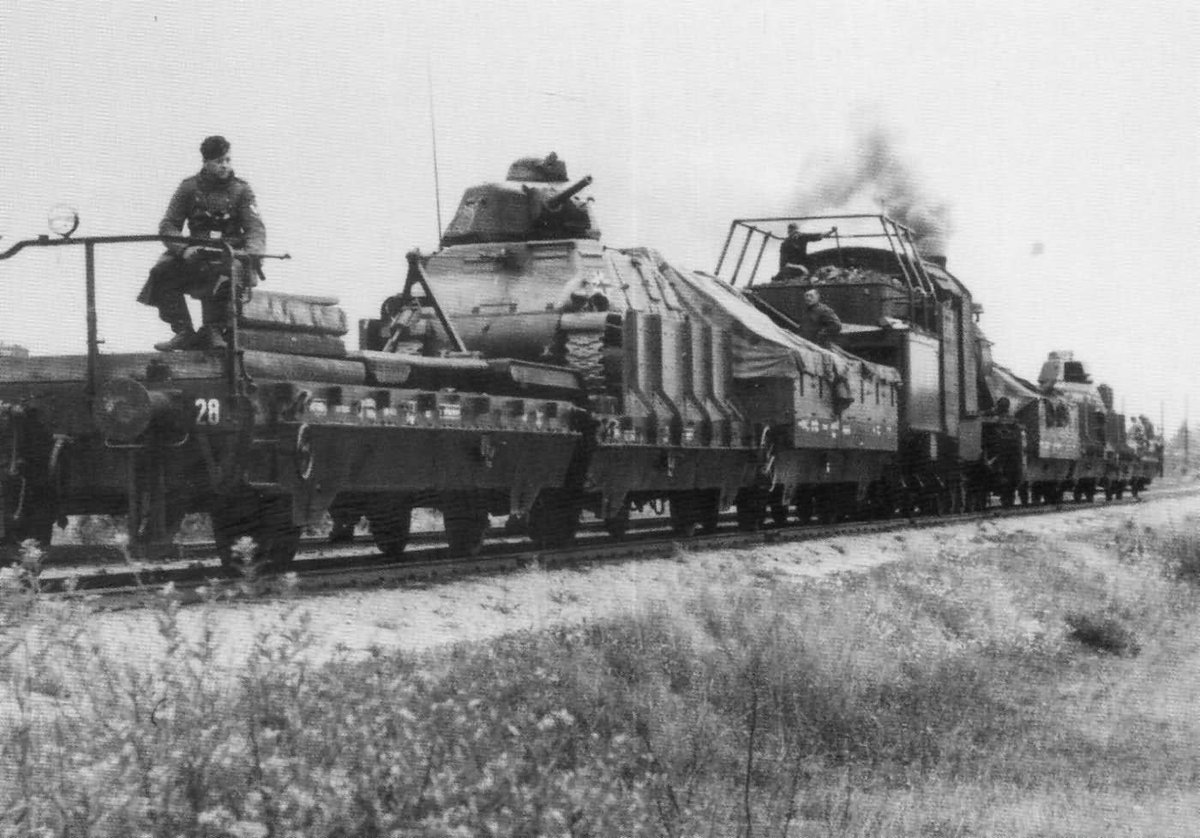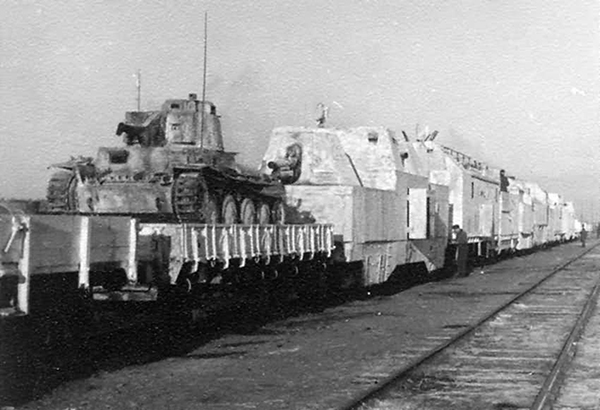(2/25) While the M-13 ('Katyusha') and M-31 had proved successful during the war, the Soviets were impressed with German spin-stabilised rockets, particularly the 21 cm Nebelwerfer 42, which had superior accuracy and twice the range of the M-31.








(3/25) The next generation of Soviet MRLs would switch to spin-stabilised rocket projectiles (турбореактивный снаряд), resulting in the M-14 and M-24 systems. The M-14 became the standard MRL of Soviet combined arms divisions in the 1950s.
kpopov.ru/military/padik…




kpopov.ru/military/padik…




(4/25) In 1959, the GAU issued its requirements for the M-14's successor, 'Grad' ('Hail'). 'Grad' was required to have 20-km range (over double the M-14), and carry 30 100–125-mm rockets, as well as a blast-frag effect no worse than the M-14 or a 152-mm shell.






(5/25) Work was led by the one-eyed Aleksandr Ganichev, chief designer of what is today NPO Splav, known as NII-74 back then. Ganichev was responsible for Grad, Uragan, and Smerch over his career, leading to him being known as the father of Soviet MRLs.
missilery.info/article/ganich…


missilery.info/article/ganich…


(5/25) Spin-stabilisation carries a cost, in that energy (fuel) has to be used up spinning the rocket, reducing range. To meet the range requirement for the 'Grad', Ganichev and his team came up with a hybrid fin/spin stabilisation system.






(6/25) The 'Grad field rocket system' (2B5 launcher, 9M22 rockets, and 9F37 racks for carrying rockets) was accepted into service in 1963. At some point it was given the GRAU index 9K51 and the launcher and rockets got named BM-21 and M-21OF.
missilery.info/gallery/kopiya…


missilery.info/gallery/kopiya…


(7/25) The original Grad's 2B5 (BM-21) launcher is based on the Ural-375D 6x6 truck. In 1986, this was switched to the 2B17 (BM-21-1), which is based on the Ural-4320. The latter has a YaMZ diesel engine replacing the 375D's fuel-hungry ZIL-375 engine.








(8/25) Each 2B5/2B17 carries 40 rockets ready to fire. The launcher can be elevated to 55° and traversed 102° left or 70° right. In order to fire over the cab (34° left/right) the launcher must be elevated to 11°.








(9/25) A full salvo of 40 rockets can be fired in 20 s. It is also possible to fire smaller salvos or individual rockets.
(10/25) The primary rocket fired by the Grad is the M-21OF. There are several types that fall under the 'M-21OF' name depending on the fuse and propellant charge used, but all carry the same HE-Frag warhead with 6.4 kg explosive. Max range is 20.4 km.




(11/25) A Grad battery (6 BM-21s) can launch 240 rockets in 20 s, delivering ~1.5 t of explosive. To do the same with 122-mm D-30 howitzers in 2 min would require an entire artillery regiment of 36 guns.






(12/25) Conversely, Grad is not in any sense a 'precision' weapon, with the dispersal area of a full Grad salvo being 35x that of a D-30 at 15 km. Even when firing small salvos with ranging, 'precise' is probably only relative.




(13/25) It is as an area bombardment system that the Grad excels.
(14/25) Aiming the Grad is a more primitive affair than on a HIMARS or Smerch, which is to be expected from an early 1960s weapon.
(15/25) Another Grad rocket type occasionally seen in Ukraine is the MZ-21 (9M22S) incendiary rocket. The 9N510 warhead carries 180 thermite incendiary elements in a hexagonal magnesium alloy casing.
en.missilery.info/missile/grad/m…




en.missilery.info/missile/grad/m…




(16/25) The MZ-21 has a slightly lower range (19.89 km) and scatters the incendiary elements over a 6,400 m² area. It is primarily intended to ignite dry vegetation and other combustible materials. Each element burns for a minimum of 2 s.
(17/25) There are many other types that can be fired from the Grad system. These include the 9M28 family, which are lighter 15 km rockets developed for the down-sized Grad-1 (9K55) system intended for motor rifle and naval infantry regiments.






(18/25) Unlike Uragan and Smerch, Grad does not have a dedicated transloader. The rockets were simply carried in 9F37 racks on trucks. In fact, a dedicated Grad rocket transporter, 9T254, did not appear until 2001. The loading process is done manually to this day.








(19/25) The intended Soviet successor to Grad was the Prima system (9K59). Prima was a comprehensive modernisation of the Grad system, featuring a new 9A51 launcher, new 9F53 rockets with a detachable parachute HE-Frag warhead for optimal blast-frag effect, and a transloader.




(20/25) In the event, Prima entered service in ~1989, so it never came close to replacing Grad. The only country known to use it today is Kazakhstan. 

(21/25) The Russian successor to Grad is Tornado-G (9K51M). Entering service in 2014, Tornado-G has a new launcher (2B17M) with automated fire control, which Prima had back in 1989, and GLONASS/GPS integration (note SMART antenna).
en.missilery.info/missile/tornad…

en.missilery.info/missile/tornad…

(22/25) Both Ukraine and Russian continue to use Grads, where they serve much the same role as division-level MRLs that they did in Soviet times.
(23/25) According to Zhirokhov, Ukraine inherited at least 378 Grad/Grad-1 systems from the USSR. At least 70 were sold abroad, leaving about 300 in service in 2014.
web.archive.org/web/2018122417…



web.archive.org/web/2018122417…



(25/25) In terms of longevity and number of users, Grad is indisputably the most successful MRL of the 20th century. Simple, cheap, and an effective area weapon, it is likely to continue to serve until well into the 21st century. 

(26/25) Should at least mention the Zelenopillya shelling incident. There are two narratives behind this: one is from Philip Karber, who claimed it was done with Tornado-G. The other is by @AdrianBonenber1, who disputes this narrative:

https://twitter.com/armscontrolwonk/status/1493258412695732226?lang=en

(27/25) To Karber, Zelenopillya (the U.S./western version) is the ultimate example of Russian lethality: advanced detection, electronic jamming, drone-integrated spotting, and long-range precision fires linked with advanced thermobaric munitions. 

(28/25) @AdrianBonenber1 puts forward a more mundane narrative. It is for you to decide who is closer to the truth. 

• • •
Missing some Tweet in this thread? You can try to
force a refresh

















































